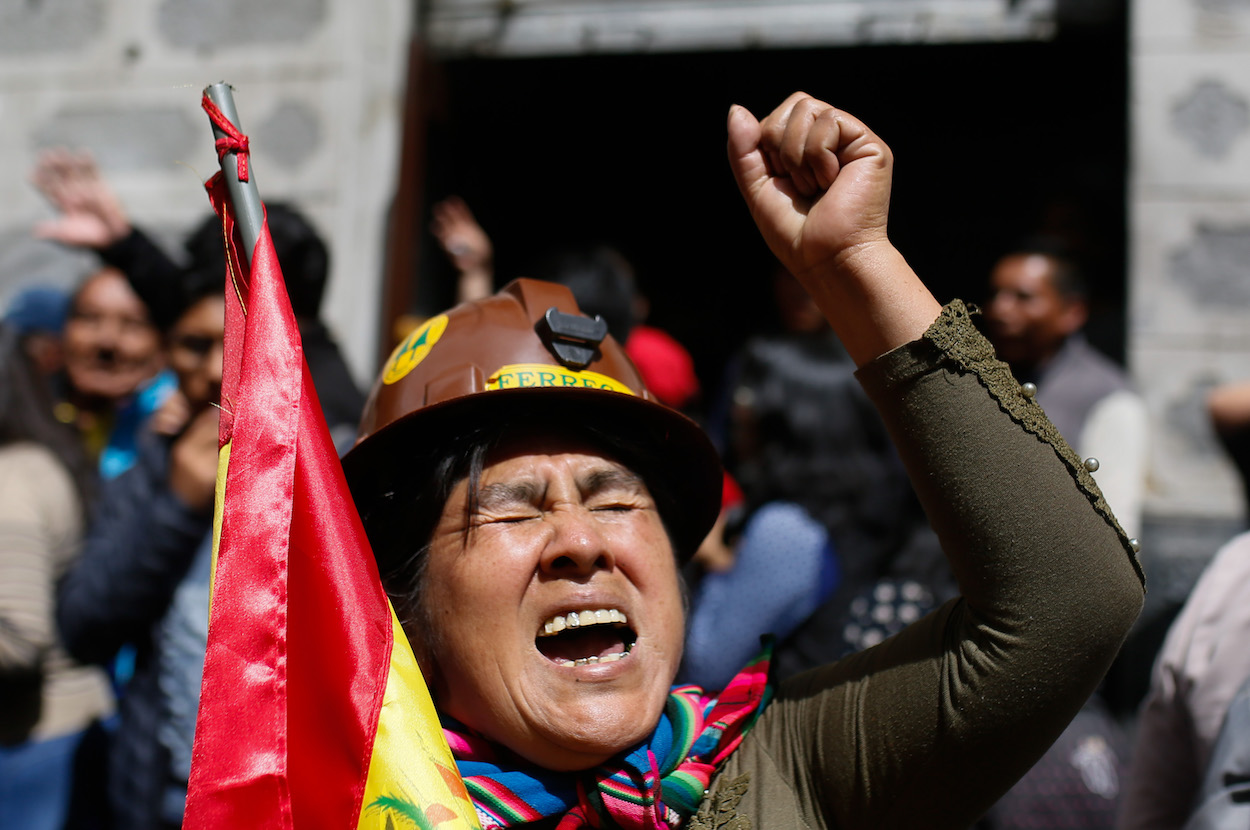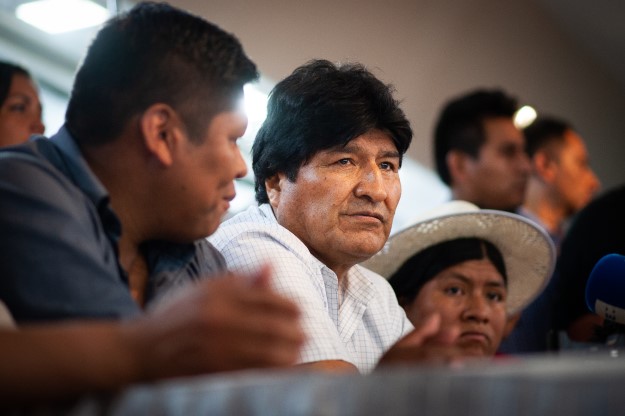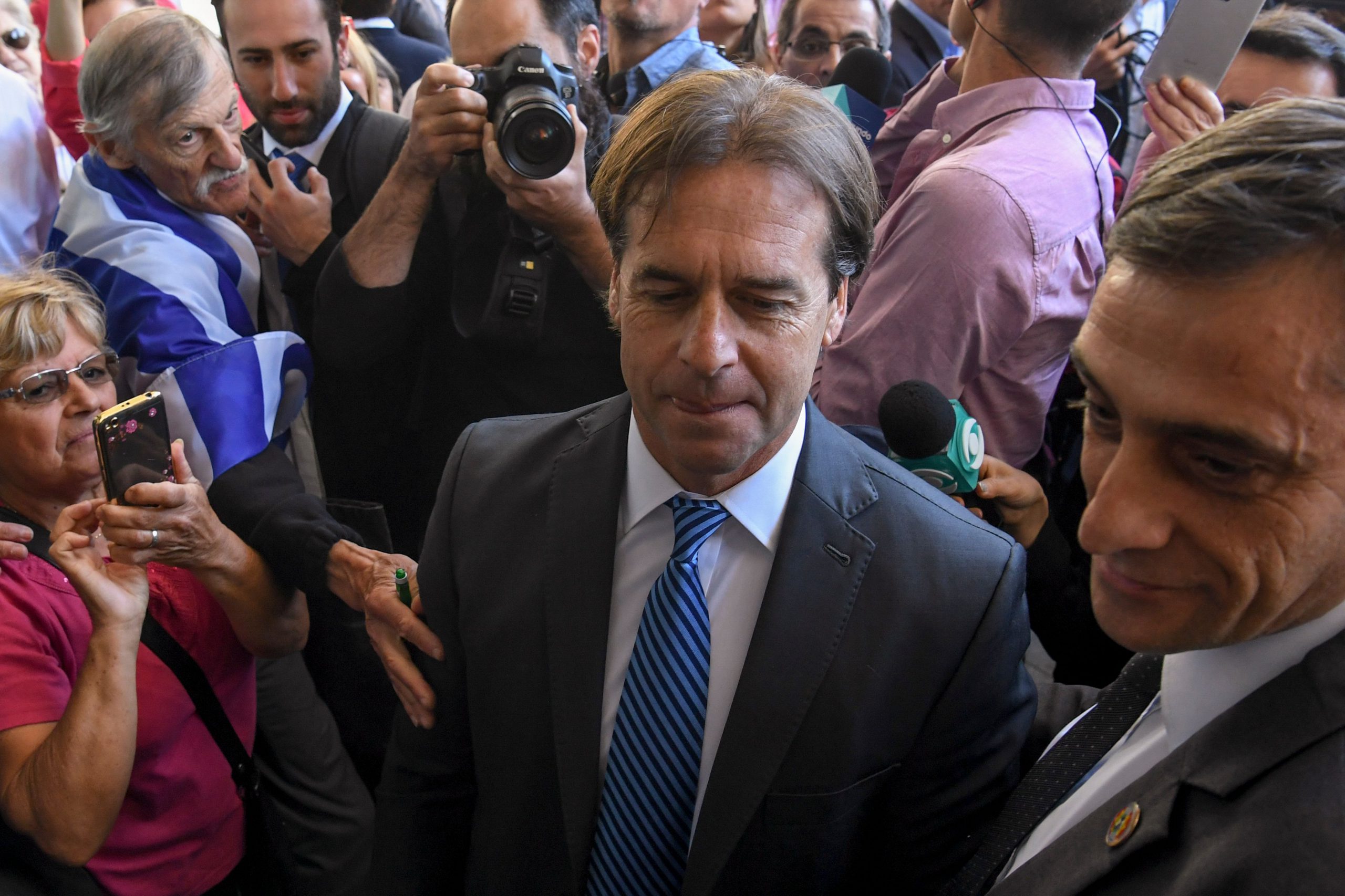LA PAZ – Like much of South America, Bolivia is in turmoil.
Although President Evo Morales ostensibly won an unprecedented fourth term in elections on Oct 20, accusations of fraud and mismanagement of the electoral process have plunged the country into confrontation and increased polarization. Several foreign governments have not recognized Morales’ victory, including Brazil and the U.S. Meanwhile, Morales’ government said it would agree to a runoff election if an ongoing OAS audit concludes it is necessary.
In the meantime, Bolivia has been rocked by demonstrations and civic strikes, many involving young people demanding a new election or a runoff between Morales and his main rival, former President Carlos Mesa. But with the country divided almost right down the middle, no matter who eventually takes office will likely face the kind of social unrest that Bolivia hasn’t experienced since Morales took office in 2005.
At its core, the confrontation reflects two very different visions of Bolivian society. Those visions are visible in the flags flown at opposing demonstrations – the indigenous multi-colored wiphala joins the Bolivian tricolor in marches backing Morales, while the wiphala is nowhere to be seen among those supporting Mesa.
The viewpoint personified by Morales is built on an essentialized, largely highland indigenous vision of people who have been mistreated for five centuries by colonial invaders and their naturalized descendants. The governing project that embodies this view began when militant social movements thrust Morales into office 14 years ago. His government subsequently has accomplished impressive levels of poverty reduction and improvements in women’s and indigenous rights. It has strengthened the role of the state in the economy, raising incomes and contributing to stability in the process.
But representative democracy doesn’t hold definitive sway in this worldview. Political participation is based on a more direct relationship and communication between ruler and ruled. In Morales’ years as president, he has repeatedly been asked to personally resolve disagreements involving his supporters; often a delegate just won’t do, even if she or he is a government minister. Although Morales mentions it far less frequently now, he has often said he rules by obeying the people.
“Evo isn’t running for office, we are running him,” a woman in El Alto, the city bordering La Paz that has historically been a stronghold for Morales, told me before the election. “It’s us, the people, who make the decision that he will be president again.”
Much of this governing style comes out of Bolivia’s robust trade union and peasant union history, where power is concentrated in leaders’ hands within a corporatist structure. Leadership is vertical and maintains power by benefiting members and their agenda. This is not to say it’s undemocratic. The grassroots can overturn or push leadership out of its way if it disagrees strongly enough, as happened in El Alto in the 2003 Gas War.
The competing vision is one based far more on local interpretations of western representative democracy and the rule of law, with a tendency to privilege private over public investment. Its adherents mostly represent the light-skinned Bolivians who have largely ruled the country since the founding of the republic in 1825. They are currently supporting Mesa, with the backing of some working class and indigenous groups who have disagreed with Morales and have been isolated as a result. Their principal platform focuses on Morales’ lack of respect for term limits and a 2016 referendum his government lost on whether he could run for office again.
There is little programmatic difference between the two top presidential contenders. But unrest is likely to follow whichever of the two takes the presidency. That’s because neither of the reductionist visions at play accurately reflects the Bolivia of 2019. Although Morales’ government has invested an unprecedented amount in rural areas and to support indigenous culture and languages, many highland farming communities have been hollowed out by a rapid migration to the cities that has left only the elderly behind.
A new generation of young Bolivians of working-class and indigenous origin is more urban and middle-class, better educated, and more connected to the rest of the world. Those under 35 make up almost half the population and few remember any government except one led by Morales. Unlike their parents, who suffered economic deprivation and the political struggles of the past, their focus is on professional jobs and ensuring a middle-class standard of living. Few of them hold either a primarily indigenous or European world view.
Bolivia’s next president will have to accommodate the increased expectations of this generation in a country that is still among South America’s poorest. He will face an economy where the good times may well have come to the end. Budget deficits are mounting, international reserves are dropping, and gasoline subsidies are draining the government budget at an alarming rate. Efforts to diversify Bolivia’s economy away from dependence on natural resources have shown uneven results to date and have accelerated deforestation and environmental damage.
A fundamental aspect of direct democracy in highland communities is based on the rotation of leadership, often annually, as governance is seen as an honor but also an onerous obligation and responsibility. Not only has Morales disrespected this tradition, central to Andean indigenous culture, but his clinging to power is particularly ominous given Bolivia’s long history of political coups and authoritarianism. He and his party’s inability to identify a viable alternative leader could mean an ignominious end to a government that, for the most part, has served the majority of Bolivia’s people well.
—
Farthing is a journalist and researcher who has co-authored three books on Bolivia. She has written for the Guardian, The Economist, Al Jazeera, the Inter-American Dialogue, and The Nation.








